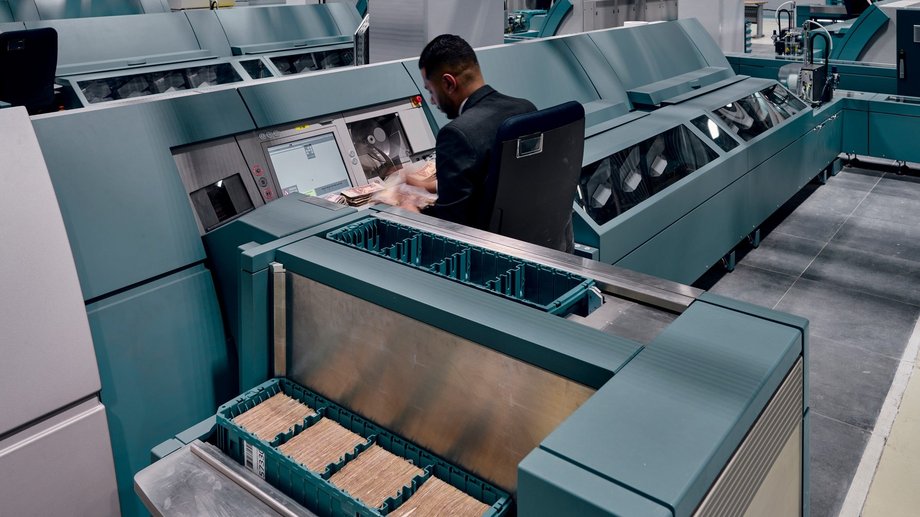Looking forward: the future of banknote processing
As the industry looks ahead, being future-proof and adaptable to new trends, opportunities, and technological developments will be critical to success. Cash cycle stakeholders will need to find the balance between achieving efficiency and cost-effectiveness, while also addressing ongoing environmental concerns.
One way to achieve this balance is by introducing new operational standards. The NotaTray® Ecosystem, for example, not only reduces supply costs within cash centers, while contributing to environmental sustainability, but also provides greater efficiencies further down the cash cycle. For example, cash transported in NotaTrays can be filled into ATMs twice as fast as before – a significant time saver. Removing redundant materials also builds resilience against supply chain disruptions.
But making the processes as smooth as possible is not all. It’s also about optimising the systems. The production of the latest generation of NotaTrays, for example, causes 50% fewer CO2 emissions than the earlier models.
“We never stop looking for new ways to innovate,” says Mitterhuber. “Just as the freight container once transformed global logistics, we believe the NotaTray® Ecosystem can revolutionize the cash cycle.”
Another way the industry can optimize is by the increased adoption of digitalization and data-driven decision-making. Enhanced data capture and sharing, coupled with improved logistics tracking, can enable better forecasting, planning, and management of cash throughout its life cycle. This, in turn, can have environmental benefits by minimizing surplus cash and optimizing supply chains.
“Digitalization and the extended sharing of data not only provide logistical and operational benefits, but also offer vast opportunities for collaboration between industry stakeholders – in both the public and private sectors. This, until now, hasn’t been particularly forthcoming. However, there has never been a greater time in history to pool together the collective strengths of different industry players,” says Mitterhuber.
As a reliable partner, G+D is uniquely positioned to facilitate stronger collaboration among central banks, commercial banks, cash-in-transit companies, and other industry stakeholders around the globe, to create a more streamlined and efficient cash cycle ecosystem – with automated banknote processing systems at its core.




